Bridgwater Docks were opened in 1841.
Canal extension
The Bridgwater and Taunton Canal had been built from Taunton to a basin at Huntworth, to the east of Bridgwater, where it entered the River Parrett. The early years of operation were marred by a series of legal disputes, with connection to the River Tone at Taunton having been made forcibly by the canal company, and which were only resolved when the Bridgwater and Taunton Canal Company and the Conservators, who managed the River Tone Navigation, agreed that the Canal Company should take over the Tone Navigation.
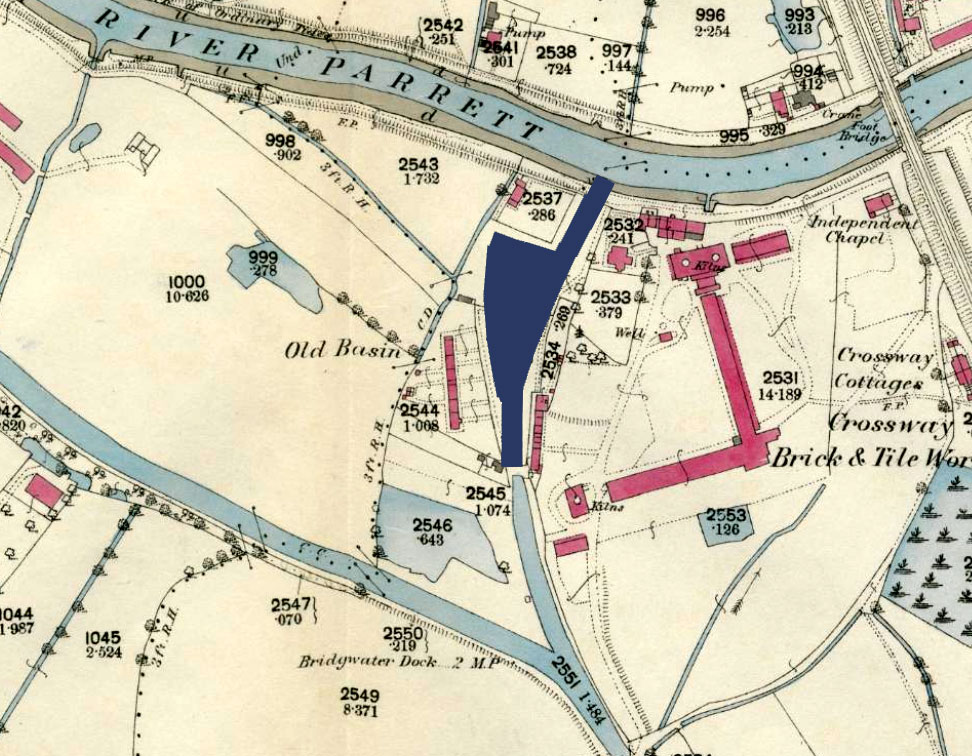
Construction of docks
By the start of the 19th century, four companies dominated the ports trade: Stuckey and Bagehot; Haviland; Axford; Sully. Each were in constant demand to the Corporation of Bridgwater for better port facilities, who had commissioned a number of surveys to construct a floating harbour.
After the Bristol and Exeter Railway obtained an Act of Parliament to construct a railway which would pass through Bridgwater in 1836, to protect its trade the canal company sought their own Act to construct a floating harbour to the west of Bridgwater, and to extend their canal to join it. This was obtained on 21 April 1837, and the works were started.
The engineer was Thomas Maddicks, who is very obscure. It is possible he may have been an assistant to Brunel, a little earlier, when the Bristol Floating Harbour was being built. By 1834 he was engineer to the Bridgwater and Taunton Canal. Bridgwater had a steam powered mud drag very similar to the Bristol vessel.
Construction work involved extending the canal from Huntworth Basin, through Hamp, to a deep cutting from Albert Street to West Street, a short tunnel at West Street, and an inner basin that covered 4 acres (1.6 ha).A smaller outer basin covering 0.5 acres (0.20 ha) was connected to the inner basin by a lock and to the river by a ship lock consisting of a single 40-foot (12 m) gate, and a barge lock, consisting of a pair of 14-foot (4.3 m) gates. The whole outer basin could be used as a lock by larger ships up to 600 tons. The estimated cost of £25,000 for the scheme escalated to nearly £100,000, most of which was raised by mortgage.
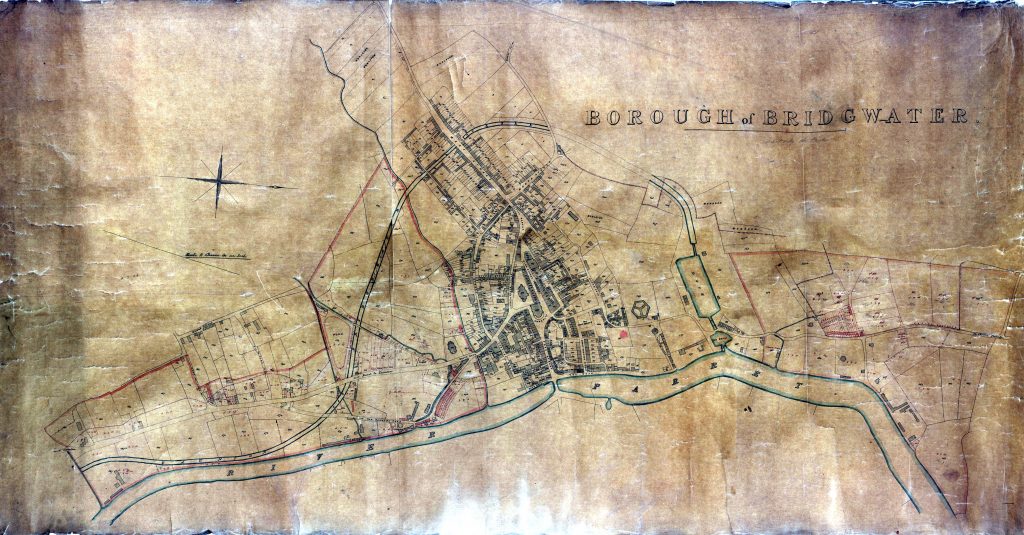
The spoil excavated to make the dock was dumped in a tall mound parallel to it (the Bridgwater Mump). It was only removed after the closure, when blocks of flats were built on the site. These were named after Maddicks the engineer.
The new facilities were opened on 25 March 1841, after which the basin and locks at Huntworth were filled in. Trade increased from 90,000 long tons (91,000 t) in 1840, before the harbour opened, to 120,000 long tons (120,000 t) shortly afterwards. Around 2,400 vessels per year were using the port by 1853. The Canal Company had hoped that the opening of the Grand Western Canal in 1838 and the Chard Canal in 1842 would increase traffic significantly, but their impact was marginal.
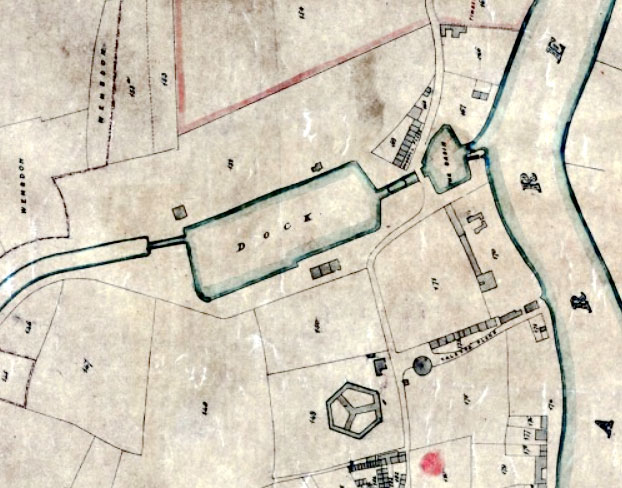
Canal takeover by railway company
The problem for the canal company was that the extension and docks had been paid for via a mortgage, and despite commercial success, the interest payments on the mortgage were crippling. In 1846 the company obtained an Act to convert the canal into a railway, although its powers were never used. Trade halved as railway competition increased, and the company was in the hands of receivers by the early 1850s.
In 1866 the Bristol and Exeter Railway stepped in and bought the entire stock of the canal company. The main attraction was the dock, with its large volume of coal traffic, but they purchased both the canal and the dock for £64,000, under the terms of an Act of Parliament obtained that year, which included a requirement that there should always be “a good and sufficient water communication between the towns of Taunton and Bridgwater”. Unlike many such acquisitions, the canal was seen as a useful adjunct to the railway network, and was maintained in good order for several years, with the Conservators of the River Tone continuing their annual inspections, and reporting any defects to the railway company.
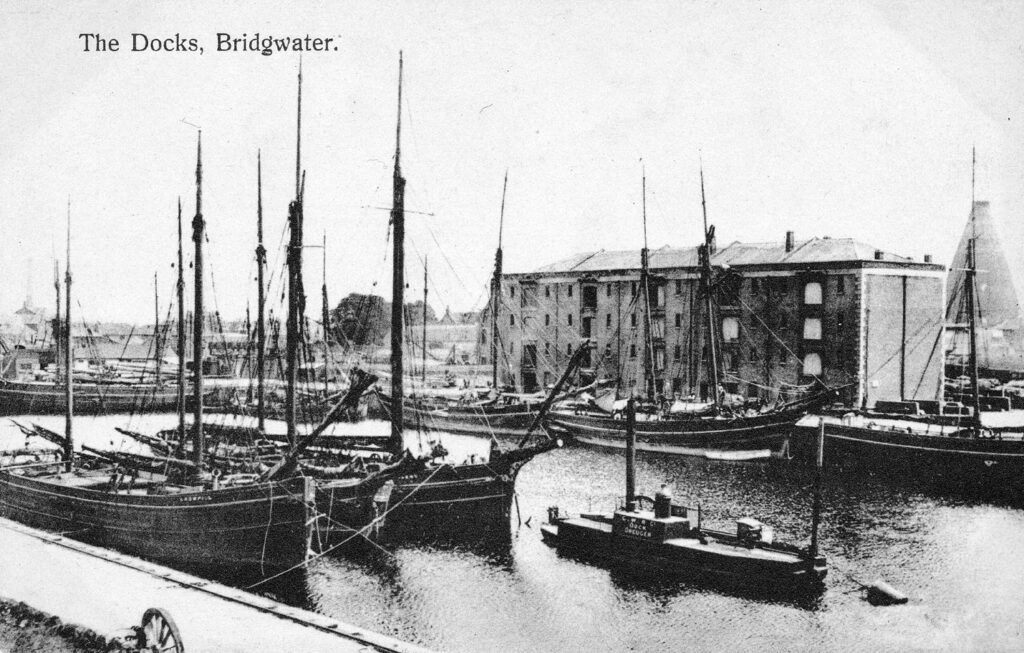
The decline begins
The importance of shipping and the docks started to decline after 1886, the year in which the opening of the Severn Tunnel caused a severe drop in coal imports by sea. The situation worsened as the railways were extended into Somerset and beyond, and new steam-powered ships became too big for the port.
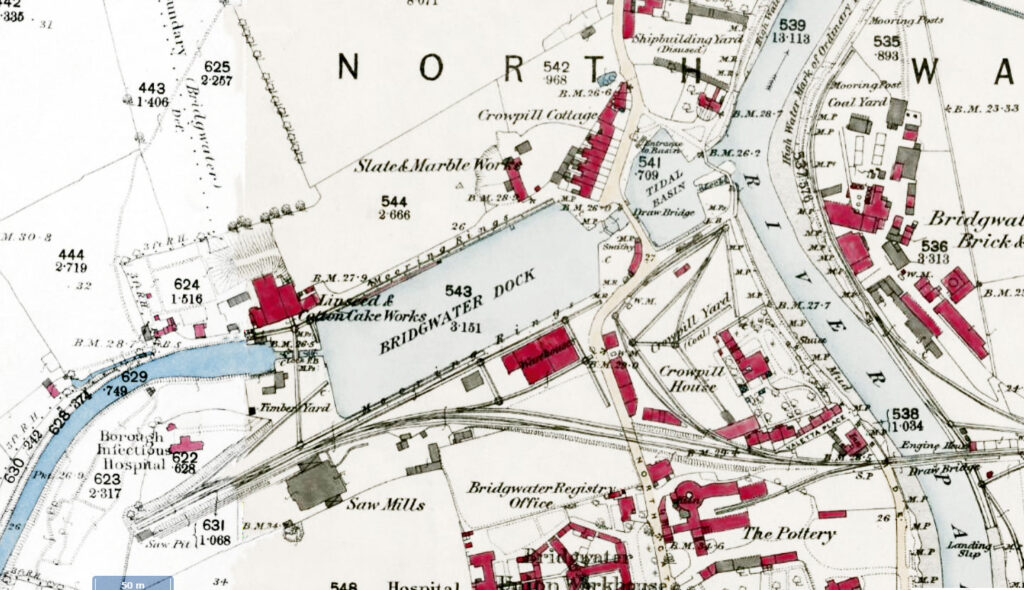
Ship Canal
In 1895 Borough Corporation offered a 100 guinea prize for a competition for the improvement of the river Parrett from the sea to Bridgwater. The first prize of 100 guineas was awarded to Edward Duncan Stoney (1868-1898), and published at pp 438-440 in the Vol 80 of The Engineer of November, 1895. It involved cutting across country from Combwich through Chilton to a turning basin adjacent to the docks at right angles, by the start of the barge canal. At the other end was a ship lock for accessing the Parrett. The sketch envisaged a new GWR rail terminus adjacent to the turning basin. The Engineer text noted that a swing bridge was envisaged to take the rail line over the river to link to the existing rail network. The estimated cost was £107,181. Stoney’s Proposal is in the Blake Museum collection:

The decline continues
The last commercial boats used the canal in 1907, from Bridgwater dock to a wharf in North Town, Taunton, and the canal was effectively closed. The canal, which had by this time passed from the B&ER into the control of the Great Western Railway, had fallen into disrepair due to lack of trade by the beginning of World War I.
Control of the docks and canal passed into public ownership with the Transport Act 1947, both consolidated initially under British Railways. The Inland Waterways Association started to take an active interest in the restoration of the canal from 1952, but this was resisted by the British Transport Commission, who padlocked the lock gates to prevent them being used. Despite this, a team of seven men was employed to maintain the infrastructure through this period. The maintenance of the channel enabled the canal to become one of the first to be used for the commercial transport of potable water, which was pumped from the River Tone at Taunton and then transported via the canal to Durleigh reservoir for consumption in Bridgwater, from 1962 onwards.
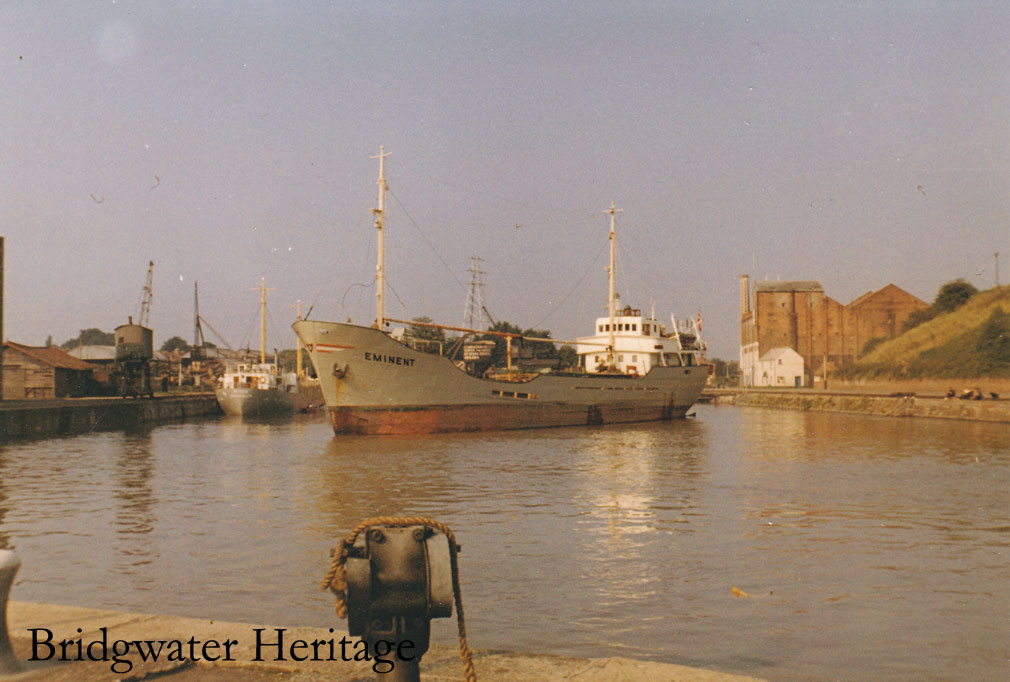

Closure of docks
By the mid-1950s, the total Port of Bridgwater was importing some 80,050 to 106,800 tonnes (78,790 to 105,110 long tons) of cargo; mainly sand and coal by tonnage, followed by timber and flour. It was also exporting some 7,300 tonnes (7,200 long tons) of bricks and tiles. But the brick and tile industry was in terminal decline, and in the mid-1960s owner British Railways decided that they were commercially non-viable. Offered for sale to any buyer; however, with no takers, the last coal was imported on 31 July 1971.
Bowerings Animal Feed Mill, located just north of the docks at the entrance from the Bridgwater and Taunton Canal, was the last commercial business operating within the preserved docks site, but closed in recent years.
